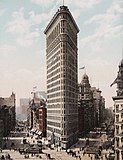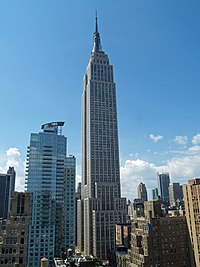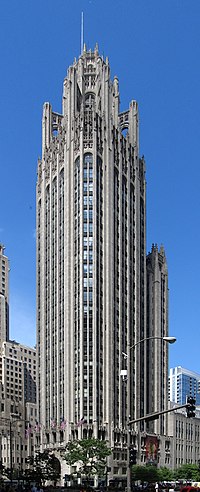Wikipedia:Today's featured article/requests/Early skyscrapers
Early skyscrapers
[edit]
The development of skyscrapers prior to World War II was concentrated in the American cities of New York and Chicago. Cities in the United States had traditionally been dominated by low-rise architecture, but a confluence of economic factors and technological advancements following the American Civil War rendered it feasible and desirable to create tall buildings with skeletal frames, which were deemed "skyscrapers" by the late 1880s. The Panic of 1893 and public opposition to these new buildings slowed their creation, but the Roaring Twenties following World War I gave skyscrapers a new boom in construction, as well letting skyscrapers spread to other cities and countries, before the Wall Street crash of 1929 dried up the real estate market, all but ending plans for new skyscrapers until the end of World War II. Skyscrapers from this era have had a mixed reception and legacy, both in their own time as well as the decades afterwards. (Full article...)
- Most recent similar article(s):
- Main editors:
- Promoted: Not yet a blurb, see reasons. Do not transclude this until FA promotion
- Reasons for nomination: Not yet an FA or even FAC, but would like to plan this blurb with the following rotating images/captions in addition to the Flatiron above. That should be for the coordinators to decide/implement when the time comes. Pinging @Epicgenius: for his records. – John M Wolfson (talk • contribs) 20:46, 8 January 2023 (UTC)
- Support as nominator. – John M Wolfson (talk • contribs) 18:56, 8 January 2023 (UTC)





